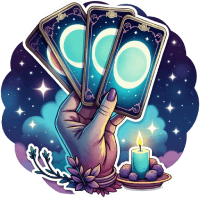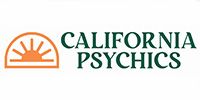Understanding the Major Arcana
When I first picked up a tarot deck, I was instantly drawn to the Major Arcana. These mysterious, beautifully illustrated cards with names like The Fool, The Lovers, and The Tower immediately captured my interest. They felt powerful, almost like they were speaking a deeper language, one that reached into the soul. And in many ways, that’s exactly what they’re meant to do.
So if you’re just getting started with tarot, or even if you’ve been reading for a while and want to deepen your understanding, I’m excited to walk you through the Major Arcana: where they come from, why they matter, and what their messages can mean for you.

A Short History of the Major Arcana
The Major Arcana has a fascinating past. The tarot as we know it today originated in 15th-century Europe as a card game called trionfi or tarocchi. The 22 cards we now call the Major Arcana were originally called trump cards, each with unique imagery and symbolism that reflected religious, cultural, and philosophical ideas of the time.
It wasn’t until the 18th century that tarot began to be used for divination and spiritual insight. Occultists and mystics, especially in France and later in England, started interpreting the Major Arcana as a symbolic map of the human journey that showed the path from innocence to enlightenment.
Why the Major Arcana Are in a Tarot Deck
A standard tarot deck has 78 cards, divided into two main parts:
-
The Major Arcana (22 cards)
-
The Minor Arcana (56 cards)
The Minor Arcana reflects everyday events, emotions, and practical challenges. Think of it like the daily details of life.
The Major Arcana, though, is something bigger. These cards symbolize spiritual lessons, life-changing experiences, and universal themes. They offer messages, such as transformation, choice, struggle, and awakening.
In short: when a Major Arcana card shows up in a reading, it’s asking you to pay attention. Something meaningful is happening or about to happen.
Why the Major Arcana Is So Important in a Reading
When I read tarot, whether I am reading them for myself or others, Major Arcana cards always feel like bright, flashing signs on the spiritual highway. They indicate moments of deep importance and should be given due respect when they show up.
A reading heavy in Major Arcana suggests major life changes, spiritual insights, or karmic lessons. We all have those times in our life when it feels like everything is changing all at once – that’s the Major Arcana at work.
Conversely, just a single Major Arcana card can act as a central theme or key message in any spread. This can point out somewhere or something (or even someone) you need to focus on.
These cards often answer “Why is this happening?” They speak to our bigger picture, such as our purpose, our path, or the internal transformations we’re moving through.
One of the best tarot reading site in the USA

4.5/5
Quick Guide to the Major Arcana (Upright + Reversed Meanings)
Here’s a quick snapshot of each of the 22 Major Arcana cards, along with their core upright and reversed meanings. These are greatly simplified, but they’ll give you a starting point for reflection.
Reversed: Recklessness, fear of the unknown
Reversed: Manipulation, untapped potential
Reversed: Secrets, disconnection from self
The Empress: Nurturing, abundance, creativity
Reversed: Smothering, creative blocks
Reversed: Domination, rigidity
Reversed: Rebellion, questioning beliefs
Reversed: Disharmony, imbalance in relationships
Reversed: Lack of direction, aggression
Reversed: Self-doubt, feeling overwhelmed
Reversed: Isolation, loneliness
Reversed: Bad luck, resistance to change
Reversed: Injustice, dishonesty
Reversed: Stalling, refusal to let go
Reversed: Resistance to change, fear of loss
Reversed: Excess, imbalance
Reversed: Liberation, reclaiming power
Reversed: Avoidance, fear of collapse
Reversed: Hopelessness, disappointment
Reversed: Confusion, deception
Reversed: Temporary setbacks, unrealistic expectations
Reversed: Self-doubt, denial
Reversed: Lack of closure, delays
Most importantly, remember that context matters. Always consider how you intuitively feel about a card. That carries just the same weight as the “textbook” meaning.
Imagery in the Major Arcana: Symbolism That Speaks
One of the things I love most about the Major Arcana is how rich and symbolic the imagery can be. Depending on the deck, you might see:
- Classic Medieval Figures (E.g. Rider-Waite-Smith Style Decks)
If you’ve ever seen a tarot card with a robed figure holding a sword, a woman taming a lion, or a tower struck by lightning, chances are it came from the Rider-Waite-Smith (RWS) tradition. Created in 1909 by illustrator Pamela Colman Smith under the guidance of mystic A.E. Waite, this deck is perhaps the most iconic and widely used tarot style in the world. Its medieval-inspired characters and strong symbolic structure form the foundation for thousands of modern decks.
What makes RWS-style decks so enduring is their clear, archetypal imagery. You’ll find kings, queens, knights, priests, beggars, and fools. They are all drawn with purposeful symbolism that reflects spiritual lessons, emotional states, and life situations. For new readers especially, this style is incredibly accessible, thanks to the rich tradition of guidebooks and resources written with the RWS in mind. It’s a deck that rewards study, yet also responds beautifully to intuition.
- Nature-Based Deities and Animals (E.g. Pagan or Druid Decks)
Nature-based tarot decks take us out of the stone walls of medieval courts and place us directly into the sacred cycles of the Earth. In these decks, you’ll often see goddesses, forest spirits, animals, trees, and elements taking the place of traditional tarot characters. These decks often draw from pagan, Wiccan, druidic, or indigenous traditions, emphasizing harmony with nature and spiritual growth through seasonal rhythms.
What I love about these decks is their gentle wisdom and grounded energy. Rather than portraying challenges in harsh or dramatic ways, nature-based decks tend to encourage reflection and connection to the natural world. The “Death” card might appear as autumn leaves falling, while “The Empress” may be a blooming field or a nurturing earth goddess. These decks are beautiful tools for those who feel a spiritual bond with the Earth and who want their readings to echo the cycles of life, death, and rebirth found in nature.
- Feminist or Inclusive Archetypes (E.g. Modern and Indie Decks)
The tarot is evolving and today, many modern and indie decks are breaking away from the traditional gender roles and hierarchies of older decks. These feminist and inclusive decks often reimagine the tarot archetypes with diverse bodies, genders, cultures, and identities. You might find a nonbinary High Priestess, same-sex Lovers, or a Hermit who looks like your neighborhood elder or artist.
These decks aren’t just about representation. They’re about reclaiming and reshaping spiritual language for today’s world. They speak to those who want a more empowering, accessible tarot experience that reflects real, lived experiences. Many of these decks are created by independent artists and readers who infuse each card with personal meaning and bold creative choices. They’re wonderful for intuitive reading, inner healing work, and breaking free of outdated norms. If you’re looking for a deck that feels like it was made for you, chances are it’s in this category.
- Cosmic, Abstract, or Surreal Designs (E.g. Digital and Oracle-Inspired Decks)
Some tarot decks feel like a dream you can’t quite explain. This is where cosmic, abstract, and surreal designs come into play. These decks often use minimalist art, dreamy landscapes, galaxies, symbolic shapes, or even digital art to explore the tarot archetypes. They can be ethereal, otherworldly, and deeply imaginative, offering a nontraditional way to connect with the cards on a purely intuitive or emotional level.
These decks may not always follow the classic Rider-Waite-Smith structure to the letter, and sometimes they blur the line between tarot and oracle cards. That’s part of their magic. They invite you to tap into your subconscious and read based on color, mood, and personal resonance, rather than relying on traditional symbols. If you’re someone who thinks in visuals, dreams, or emotions, these decks can help you open new doors of perception and spiritual insight. They’re especially popular among digital artists, intuitives, and those who love to read with a more fluid, open-ended approach.
While the core meanings stay consistent, each deck tells the story of the Major Arcana in a unique visual language. That’s why I always recommend choosing a deck that speaks to your intuition. The imagery should always feel like it’s talking to you.
Final Thoughts
The Major Arcana isn’t just a set of cards. It should be viewed as a journey of the soul, a story we live and relive in different ways throughout our lives. Whether you’re the Fool stepping out into the unknown or the World completing a major chapter, these cards can offer insight, reflection, and deep wisdom.
Take your time getting to know them. Let the art draw you in. Let the meanings evolve. And most importantly, let your own intuition be your guide, because that’s where the magic really lives.